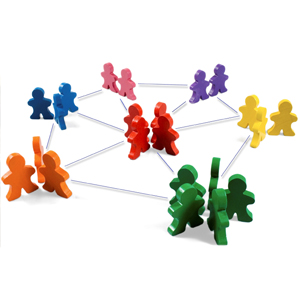 One of the best things about having Zac (a Dan Kennedy trained Gold Certified Copywriter) as a business partner is that he keeps me up to date and tells me all the really useful stuff he comes across. Last year he told me about a really simple but effective way to write Google AdWords, and send me a link to check out Perry Marshall’s Swiss Army Knife Method of writing good AdWords. It made it much simpler, and we used it for our Facebook ads and had a lot of success!
One of the best things about having Zac (a Dan Kennedy trained Gold Certified Copywriter) as a business partner is that he keeps me up to date and tells me all the really useful stuff he comes across. Last year he told me about a really simple but effective way to write Google AdWords, and send me a link to check out Perry Marshall’s Swiss Army Knife Method of writing good AdWords. It made it much simpler, and we used it for our Facebook ads and had a lot of success!
Today I want to focus on one specific technique that was taught and how it applies to all copywriting and marketing. When marketing I always found that it was so easy to get stuck on focusing on one benefit or one particular view of a product and trying to come up with different angles was quite difficult. Or as Perry Marshall puts it in the report I read ““There’s only a few things I can think of to say and it’s really hard to not sound like everyone else in my market.” – But with this technique it completely eliminates the ‘stuckness’ that I used to get and gives me a treasure trove of ideas to choose from.
Perry didn’t have a particular name for it, he mentioned it simply as ‘Relationships’, but for the purpose of this article I’m going to call these “Relationship Angles”.
Most people, when writing or marketing focus on one relationship angle, usually the relationship between your customer and your product/service, but this is what everyone does, this is what’s expected, and to be honest it is very hard to stand out and be noticed when marketing with this relationship.
For example, a solar power company might simply say “Get Solar Power Installed This Summer?”
Pretty dull and boring really…
If you view the diagram you’ll notice I’ve identified 6 different People / Things. There could be heaps more than this, but for now we will simply use these. What we want to do is shift the angle that we look at with our marketing, view the different relationships that exist and how your marketing could fit into that angle.
For example, we could look at the relationship between our customer’s family member (wife / husband) and something your customer hates (high power bills), and suddenly it opens up a completely different angle to tap into:
“Are high power bills causing arguments in your home?”
“No more making your family suffer in the heat over summer in order to save on your ridiculous power bills”
Or perhaps we could look at something your customer loves (saving money) and your customer’s enemy (the government) – once again it opens up even more angles to try on:
“The latest government taxes has increased power costs making it difficult for families to save money”
Or even the relationship between your customer’s children and your customer.
“Your kids will inherit the world we create, save power and save the planet”
These ideas are by no means polished, but by simply taking a relationship, you can wrap your marketing around it and completely change the angle you take.
I hope you find this tool as useful as I did!
 The other week, Zac and I were sitting on our monthly Mastermind call listening to hospitality expert Jon Taffer from reality TV series ‘Bar Rescue’. He dispensed some great advice: “9/10 business people think the physical item or the service they provide is the product that they are selling, but it’s not, it’s the vehicle. The product is always the reaction to the experience, and he or she that creates the best reactions wins.”
The other week, Zac and I were sitting on our monthly Mastermind call listening to hospitality expert Jon Taffer from reality TV series ‘Bar Rescue’. He dispensed some great advice: “9/10 business people think the physical item or the service they provide is the product that they are selling, but it’s not, it’s the vehicle. The product is always the reaction to the experience, and he or she that creates the best reactions wins.” There’s an old saying that goes “Jack of all Trades, Master of none”. The saying is used in reference to a person that is competent with many skills, but is not necessarily outstanding in any particular one.
There’s an old saying that goes “Jack of all Trades, Master of none”. The saying is used in reference to a person that is competent with many skills, but is not necessarily outstanding in any particular one. Pitfall Number 1: If you are perceived as a jack-of-all-trades then you are perceived as a master of none… It doesn’t matter how great your skills are or how masterful you are at what you do, when you promote yourself as a ‘I can do everything’ type business, people assume you will be competent, but not the best.
Pitfall Number 1: If you are perceived as a jack-of-all-trades then you are perceived as a master of none… It doesn’t matter how great your skills are or how masterful you are at what you do, when you promote yourself as a ‘I can do everything’ type business, people assume you will be competent, but not the best. With Newsletter Marketing Systems recently purchasing Strive Designs (my graphic design & print business), it has made me look close and hard at the numbers in the business.
With Newsletter Marketing Systems recently purchasing Strive Designs (my graphic design & print business), it has made me look close and hard at the numbers in the business. When Ben and I met, we were wrapt. Closer in age (and maturity) than most of the people at the seminar we were attending – it made it much more fun. Over the coming months we did a few bits and pieces together – the odd client project. It was a good time.
When Ben and I met, we were wrapt. Closer in age (and maturity) than most of the people at the seminar we were attending – it made it much more fun. Over the coming months we did a few bits and pieces together – the odd client project. It was a good time. Pretty much everybody in business has business cards. There are some really good ones around, but most of them are pretty average, in fact most are actually very boring. (some are downright embarrassing)
Pretty much everybody in business has business cards. There are some really good ones around, but most of them are pretty average, in fact most are actually very boring. (some are downright embarrassing)